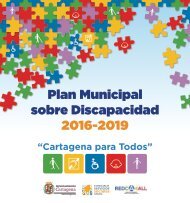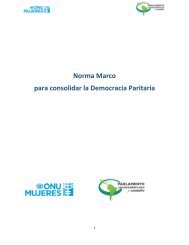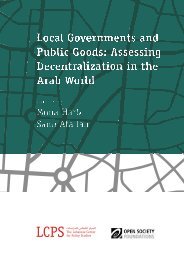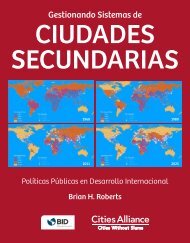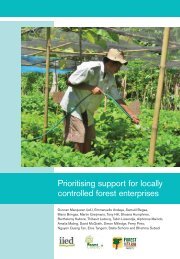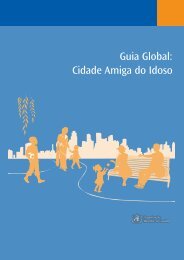cities
SoCR16-Main-Report-online
SoCR16-Main-Report-online
Create successful ePaper yourself
Turn your PDF publications into a flip-book with our unique Google optimized e-Paper software.
BRICS country Lessons Challenges<br />
Brazil<br />
Little done to manage urban growth during the<br />
latter part of the twentieth century, resulting in<br />
growth of informal settlements (favelas) on<br />
hazardous and peripheral land, and huge urban<br />
inequalities.<br />
Russia<br />
Highly urbanised (around 75%), but current urban<br />
growth very low, with many <strong>cities</strong> having a static<br />
or declining population. Growth continues in<br />
Moscow and in a few of the better located<br />
secondary <strong>cities</strong>.<br />
India<br />
The one BRICS country still experiencing robust<br />
economic growth but still extremely poor. Very<br />
low levels of urbanisation (around 30%).<br />
China<br />
The “giant”, accounting for 46% of the population<br />
and 56% of the economy of the BRICS countries.<br />
Urbanisation rose from less than 20% in 1980 to<br />
more than 50% currently. Growth focused on the<br />
eastern seaboard until around 2000, when <strong>cities</strong> in<br />
the interior also grew, supported by the<br />
government’s Go West policy.<br />
South Africa<br />
• Innovative approaches to urban management, e.g.<br />
transit-oriented development (Curitiba);<br />
participatory local budgeting (Porto Alegre); value<br />
capture instruments used to fund new<br />
infrastructure (Sao Paulo).<br />
• Government support of local initiatives through<br />
the the Estatuto da Cidade (Statute of the City)<br />
and the Ministry of Cities.<br />
• Electricity production based on hydro power<br />
not coal-fired generation; green fuels rather<br />
than petroleum.<br />
• Ambitious dreams for new urban development,<br />
e.g. building a “New Moscow” beyond the edge<br />
of the existing city.<br />
• Like South Africa, Russia has an extremely<br />
resource-inefficient economy because of the<br />
historically low cost of carbon-based fuels.<br />
• Local-level innovations within a difficult urban<br />
context.<br />
• Impressive economic growth (Delhi) and<br />
success in transitioning to a high tech economy<br />
(Bangalore).<br />
• Recent introduction of a metro system (Mumbai).<br />
• Highly successful infrastructure-led<br />
development<br />
• Recent policy development recognises clusters<br />
of <strong>cities</strong> (or city-regions) as a spatial unit for<br />
addressing environmental, economic, transport<br />
and other challenges.<br />
• Cities that have made the shift to a tertiary<br />
economy are benefitting from consumptionled<br />
growth.<br />
• Failure of public transport to keep pace with<br />
the growth of the large <strong>cities</strong>.<br />
• Mass street protests against inadequate<br />
transport systems in 2013, repeated again in<br />
January 2016.<br />
• Economy in recession, and political troubles<br />
mounting, leading to some of the shine of the<br />
Brazilian case wearing off.<br />
• Struggling economy battling low commodity<br />
prices.<br />
• Many <strong>cities</strong> created under a command<br />
economy are locationally marginal under<br />
market conditions.<br />
• Like in South Africa, many Russian <strong>cities</strong> have<br />
an “inverted density gradient”, with higher<br />
population densities on the edge than in the<br />
centre of <strong>cities</strong>.<br />
• High levels of informality.<br />
• Infrastructure deficits and fragmentations.<br />
• Environmental degradation (Delhi is the most<br />
air-polluted large city in the world).<br />
• Collusion between municipal authorities and<br />
developers led to large-scale overbuild in<br />
places.<br />
• Rapid industry-led growth caused environmental<br />
problems, especially air pollution in <strong>cities</strong>.<br />
• Economic slowdown in China putting pressure on<br />
<strong>cities</strong> built on low-end manufacturing.<br />
• Controls on urbanisation through the hukou<br />
(household registration) system have been<br />
eroded, but still inequality between those with<br />
an urban hukou and the “floating population”.<br />
The minnow, accounting for only 1.7% of the population and 2.6% of the economy of the BRICS countries.<br />
Higher level of urbanisation and per capita income than India and China.<br />
Like China and Russia, South Africa had controls on urbanisation which were only removed in the mid to late 1980s. Since then, there has been an upsurge in urbanisation, which is<br />
now gradually slowing down.<br />
South Africa’s <strong>cities</strong> have struggled to keep pace with this recent urban growth and (like in other BRICS countries) face considerable challenges of urban inequality and<br />
non-sustainable growth paths.<br />
22 State of South African Cities Report 2016



